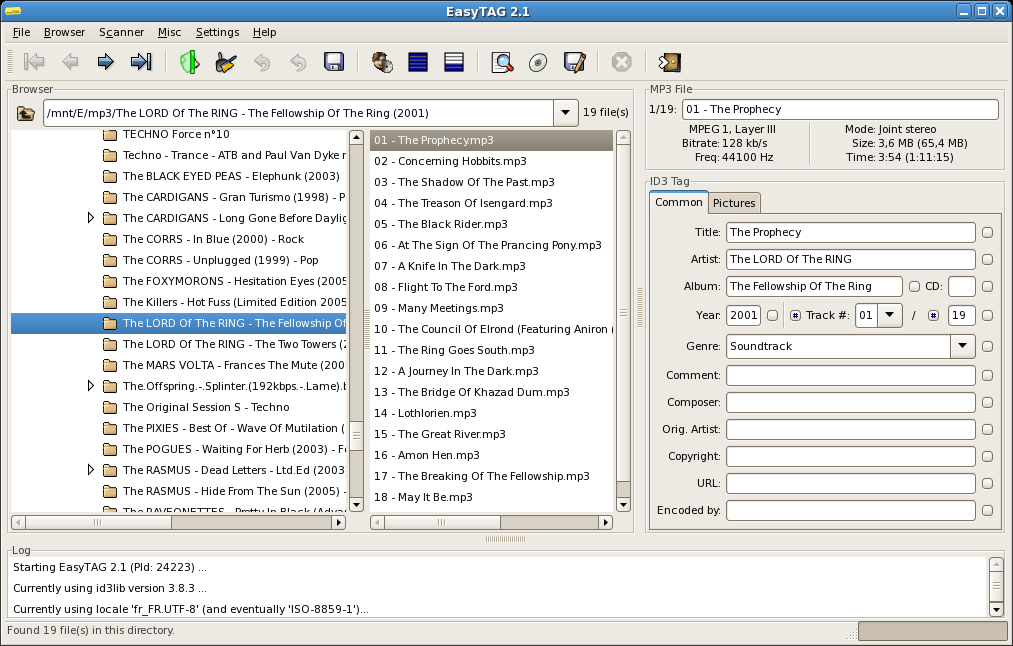mythtv: A personal TV recorder
September 14th, 2008 edited by VichoArticle submitted by Karl Erlandson. Do you think there are better alternatives to the packages posted here? Help us! Submit good articles about software you like!
No one likes to sit at home and wait for their favorite show to come on anymore and many have turned to buying hardware to record them for later viewing. Popular solutions to this problem include the expensive and proprietary TiVo and cable/satellite boxes with built-in TV recorders.
MythTV aims to solve these problems without the need to rent a cable box ($15/month) or buy a TiVo (~$200). An older computer can be used and all that needs to be purchased is a simple TV card, which can be found for under $30 on eBay. An HDTV card will cost you more, and will also require a more recent computer. If your TV card doesn’t come with a remote control, a controller will have to be purchased separately.
As of last year, the TV guide info used for MythTV in North America is no longer free. Unfortunately, if you live in the USA or Canada, you now have to pay a subscription fee if you want to access the TV guide info, but the cost is negligible at $20/year and going down with every new subscriber. There is a free trial period available. If you live in another country, you may find TV listings for your country in XMLTV.
Features
 What MythTV gives you that those other boxes don’t is freedom, it’s open source so you can do whatever you want with your machine. For example, you can set it to automatically skip commercials (a feature that surprisingly works!).
What MythTV gives you that those other boxes don’t is freedom, it’s open source so you can do whatever you want with your machine. For example, you can set it to automatically skip commercials (a feature that surprisingly works!).
MythTV can be divided into two main programs, the Backend and the Frontend. The Backend refers to the program that actually records programs and must be installed on a computer that has a TV tuner. The Frontend program allows you to view content from the Backend. Importantly, the Frontend program can be installed on the Backend or as a stand-alone program on any computer. With a Frontend only install, you can watch what you’ve recorded in any room of your house. They will also have the ability to watch live TV (with options to pause, rewind, fast forward).
MythTV also offers many recording options with the ability to record a show daily, weekly, once, only in a certain timeslot, etc. Since it is open source, various improvements have been added. An interesting plugin was developed that overcomes the problem of recording sports when games go on longer than scheduled. This program actually checks the web to see if the game it is recording has gone into extra time and adjusts the recording time to end later.

MythTV will organize your music and video libraries and allow all that downloaded content to be played on your home entertainment system. Album and DVD art can be automatically downloaded from IMDB. I have to say that the music system could use a lot of work.
 Other options include the ability to schedule your recordings over the internet, watch your shows over the internet, display weather alerts, and notify you of new emails on screen.
Other options include the ability to schedule your recordings over the internet, watch your shows over the internet, display weather alerts, and notify you of new emails on screen.
Availability
MythTV is not available as a Debian package due to licensing/legal issues, but it is on debian-multimedia. To enable this repository, add this to your /etc/apt/sources.list:
deb http://www.debian-multimedia.org/ stable main
(instead of stable, put “testing” or “unstable” if you use that flavors of Debian). Now run apt-get update. The MythTV wiki provides instructions to install it in Debian stable (Etch), Debian unstable (Sid) and Ubuntu. The Ubuntu community has its own set of installation instructions. I found the KnoppMythWiki very useful in setting up my machine. They also offer a MythTV distribution.
Posted in Debian, Ubuntu | 6 Comments »




